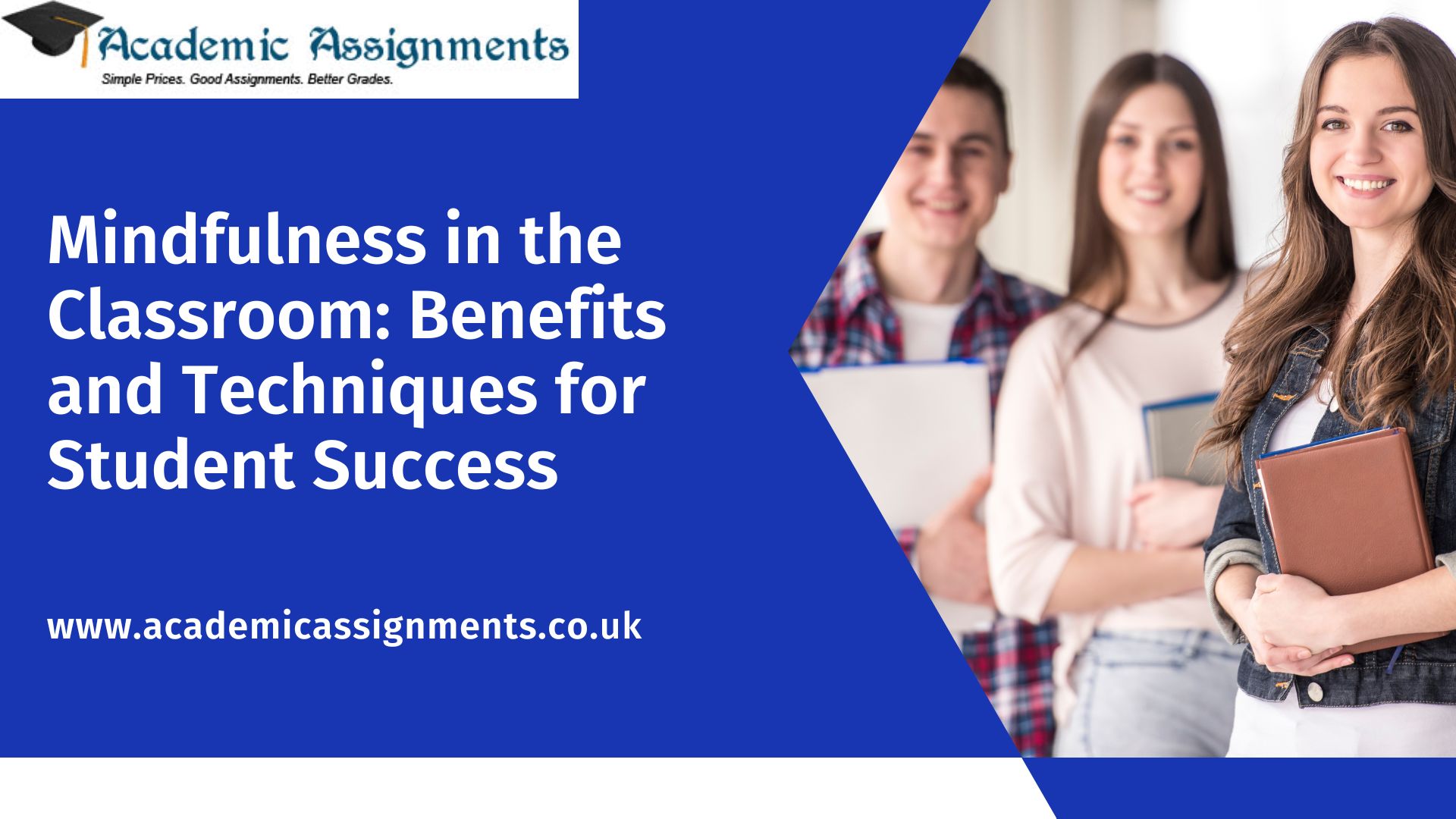Mindfulness in the Classroom: Benefits and Techniques for Student Success
What is Mindfulness?
Mindfulness is a condition of dynamic, open attention to the current second without judgment or interruption. It is a psychological condition of mindfulness described by uplifted concentration and clearness. Mindfulness is frequently connected with reflection and other pondering practices; however, it can be drilled in regular activities, like strolling or eating.
Generally, mindfulness includes pointing out one’s ongoing second instead of living before or stressing about what’s in store. It includes focusing on the tangible encounters of the current second, like the sights, sounds, smells, and actual impressions of one’s environmental factors, as well as the contemplations and feelings that emerge.
It can likewise be polished daily by focusing harder on encounters and environmental elements. Many individuals find that mindfulness practices can assist them with living completely now and appreciate more prominent harmony and prosperity.
Benefits of Mindfulness in the Classroom
Mindfulness training includes concentrating on the current second and non-critically noticing one’s considerations and sentiments. It has, as of late, acquired prevalence, particularly in the training area, as reviews have demonstrated how mindfulness can help the classroom. Here are a few benefits of mindfulness in the classroom:
- Further developed Concentration: Mindfulness assists students with growing better concentration and focus, which can prompt better scholastic execution. Students who practice mindfulness are better ready to focus, keep away from interruptions, and remain focused.
- Decreased Stress and Tension: Mindfulness has been displayed to ease uneasiness and stress, which can be particularly useful for students who battle with nervousness or are managing stressors in their own lives. Rehearsing mindfulness permits students to deal with their stress and nervousness more successfully.
- Improved Profound Guideline: Mindfulness can assist students with controlling their feelings all the more. By noticing their contemplations and sentiments without judgment, students can foster more prominent mindfulness and figure out how to deal with their feelings steadily and usefully.
- Worked on Interactive abilities: Mindfulness can assist students with growing better interactive abilities, like sympathy, empathy, and correspondence. By rehearsing mindfulness, students can foster a more prominent consciousness of their feelings and the feelings of others, which can prompt better associations with their companions.
- Expanded Flexibility: Mindfulness can assist students with creating more prominent strength and adapting to tough spots all the more. By noticing their considerations and sentiments without judgment, students can foster a more inspirational perspective and a more noteworthy feeling of internal strength.
Mindfulness can help the classroom by further developing concentration, decreasing stress and nervousness, upgrading profound guidelines, working on interactive abilities, and expanding strength. By integrating mindfulness rehearses into the classroom, teachers can assist students with creating fundamental abilities that can serve them scholastically and actually.
Mindfulness Techniques for Students
Students can utilize mindfulness techniques to work on their concentration, lessen stress, and advance general prosperity. Here are a few models:
- Profound relaxing: Taking profound, slow breaths is a straightforward but compelling method for quieting the psyche and diminishing stress. Students can rehearse profound breathing activities before tests or when restless or overpowered.
- Body scan reflection: This procedure centres around each piece of the body and notifications any sensations, like strain or unwinding. Students can become more mindful of their sensations and lessen stress by zeroing in on the body.
- Mindful eating: Students can rehearse mindful eating by zeroing in on their food’s flavours, surfaces, and scents and getting some margin to appreciate each chomp. This can assist them with dialling back and being more present right now.
- Appreciation journaling: Students can keep an appreciation diary and record 3 things they value daily. This can assist them with fostering a more inspirational perspective and diminish stress and tension.
- Strolling reflection: This strategy centres around each step and the impression of strolling. Students can rehearse this procedure en route to class or throughout a break between classes to diminish stress and further develop the centre.
By integrating these mindfulness techniques into their day-to-day schedules, students can further develop their psychological and profound prosperity, diminish stress and nervousness, and upgrade scholastic execution.

 Blogs
Blogs





